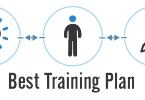The front squat is a powerful tool in any personal trainer’s arsenal, but unfortunately is often underused because many personal trainers don't feel confident teaching their clients how to front squat properly.
Whilst the back squat is a crucial exercise to strength development, the front squat serves as an important variation that provides a different stimulus for your clients. It's not that one squat variation is better than the other, but understanding and utilizing both exercises for your clients will offer far superior results than just using one alone.
For those who are unfamiliar with the front squat, here is a quick recap of the benefits:
3 Major Benefits of Front Squats
Your clients will enjoy many benefits when you add front squats to their training routine. Here are a couple of the most important benefits:
#1. Build a Stronger Core
Front squats create a strong mid-line as the torso needs to be upright during the movement. This demands more core stabilization and therefore increases abdominal development and strength.
#2. Build Functional Strength
Front squats translate to many other important exercises such as the clean, the clean and jerk, thruster and more.
Chad Vaughn of the CrossFit Weightlifting Trainer Course: https://t.co/et7wcDT7nwhttps://t.co/g6mzw2Q7sc
— CrossFit (@CrossFit) May 4, 2016
#3. Build More Strength with Less Weight
Front squats require less weight to achieve the same effect as the back squat. A study published in the Journal of Strength and Conditioning Research found that front squatting less weight results in the same muscle activation as back squatting more weight. This is important for clients with injuries or those who are intimidated by heavy weights.
Your clients will see progress when you challenge them to DO more, not necessarily LIFT more weight!
By now you should see the benefits of front squatting. However, this movement does require more technique and mobility, especially in the upper back (shoulders, lats, and rotator cuffs) as holding the bar in the front rack position is not natural to many.
In the remainder of the article, I’ll go through some common mistakes you’ll see in your clients and what you can do to fix these mistakes.
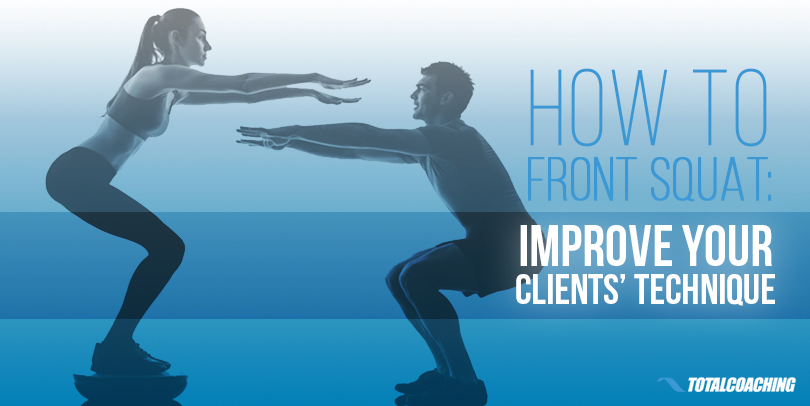
Common Issues with the Front Squat
As with any exercise, there are numerous ways that your client can lose perfect form while attempting a front squat. Here are the most common errors:
Mistake #1: Low Elbows
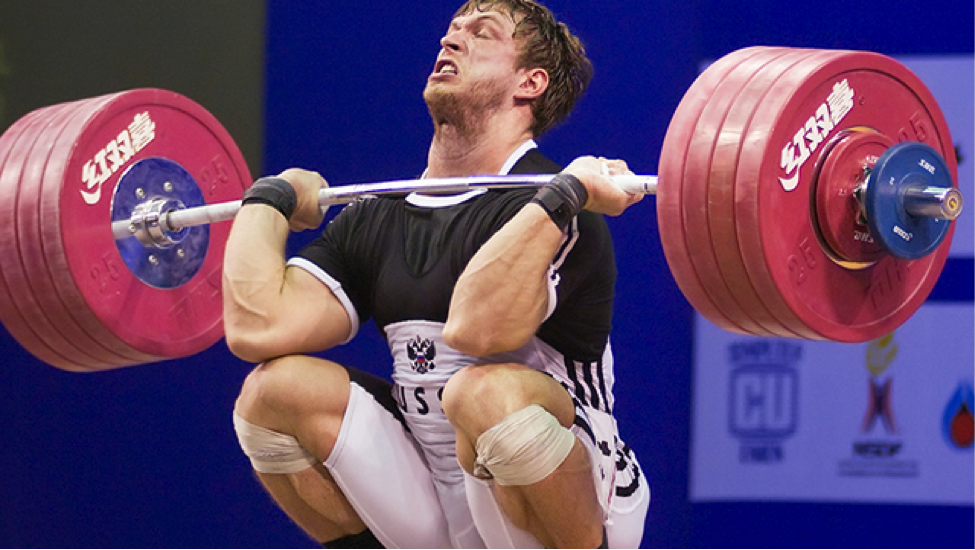
This is one of the most common mistakes for newcomers to the front squat however, most of the time, it’s not even their fault. From the image above, you can see how having low elbows can be a dangerous position (if the elbows touch the knees and your client loses control of the bar, it can cause the wrists to snap).
The low elbow also causes the bar to begin rolling forward, eventually falling to the ground. The key to a good front squat is high elbows.
So how can you achieve the high elbow?
For many clients, you’ll often find the shoulder region to be extremely tight which inhibits their flexibility. No matter how much you tell them or try to force their elbows to stay high, it just won’t give because they’re simply missing the shoulder mobility.
Here are two exercises that I’ve found to be extremely helpful in resolving mobility issues that prevent perfect front squat technique:
1. Lacrosse Ball Massage
As I mentioned above, if your rotator cuffs, lats or shoulders are too tight, then it will prevent you from being able to push your elbows up. Here’s where the lacrosse ball comes in.
Have your client grab a lacrosse ball and roll it over their latissimus dorsi, rotator cuff and/or shoulders. You can either have them lie on the floor, or if that’s too much pressure for them to handle, have them roll it against a wall.
They should seek out areas that are tight and sore (they’ll know when they find them!), and lay on those areas for 20-30 seconds before moving to another spot. Keep repeating this for different areas of the shoulder region.
I liked a @YouTube video from @antranikdotorg https://t.co/9IOPP8IDpv How to use a Lacrosse Ball for Self Massage with Antranik
— Kamaka Baculpo (@kamakanani0) January 30, 2016
Advanced Method: If you want to take it up a notch, instead of just laying still on the lacrosse ball, have your client move their arm side-to-side, up and down and in circular motions. By doing this, it opens up and exposes different muscles that may be hidden otherwise.
2. Gua Sha / Scraping Therapy
A little known but very effective technique for relieving muscular pain and tension is known as Gua Sha (aka coining or scraping). Gua Sha works by scraping the surface of your skin (don’t worry, the tool is blunt so it doesn’t hurt) which consequently breaks up the adhesions underneath and allowing blood to flow freely again. Within minutes of doing this, patients notice immediate mobility benefits.
Here’s a video that will explain this in more detail:
Gua Sha works extremely well for those with frozen shoulder or other shoulder impingements, making it a perfect solution for our low elbow issue during the front squat.
Mistake #2: Round Upper Back
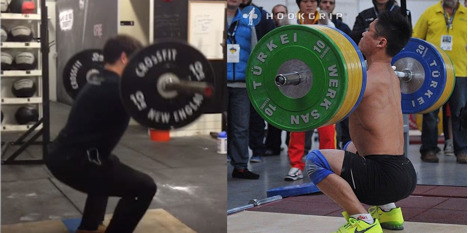
A rounded upper back towards the bottom of the front squat makes the exercise tremendously harder for your client as the weight is now completely shifted towards the front of their body. Consequently, this causes many people to start standing on their toes and eventually drop the weight forward.
One cause of this error is poor thoracic extension, and therefore our solution is to improve thoracic mobility. One of the best ways to do this is to use a foam roller. Foam rolling can relieve the tension allowing your client's upper back to arch back and prevent it from collapsing forward.
Here’s what you should have your client do:
Grab a foam roller and lay it flat on the ground. Have your client lie over it so that the foam roller sits just under the middle of the spine. Have your client lean back and feel the back stretch. Keep repeating this whilst moving the foam roller up towards the neck.
Here is a video that can help explain:
By simply repeating this drill 3-4 times a week, you will see a massive difference!
Mistake #3: Leaning forward
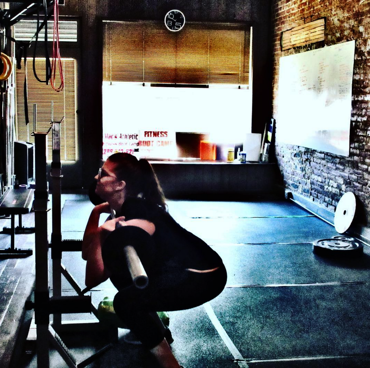
One of the key components of a strong front squat is being able to keep the torso upright. Once your client starts leaning forward, the weight will naturally fall in front of him or her.
One of the main reasons this happens is due to a lack of core strength. If you notice this with your client, I would start by reducing the weight until they master the upright position. From then, you can slowly build the weight up again.
Weak core strength limits functional strength across all movements. Start training from the core!
This might mean that they practice with an empty bar, a broomstick, or a dowel. Over time their core will strengthen enough to begin adding weight in small increments.
The beauty of the front squat is that it significantly strengthens the core muscles, so naturally, after incorporating this movement regularly with your clients, their tendency to lean forward will begin to correct itself.
If you want to speed up the process, you could have them perform some isometric holds (like L-sits or planks), and/or any variety of abdominal exercises as you see fit.




